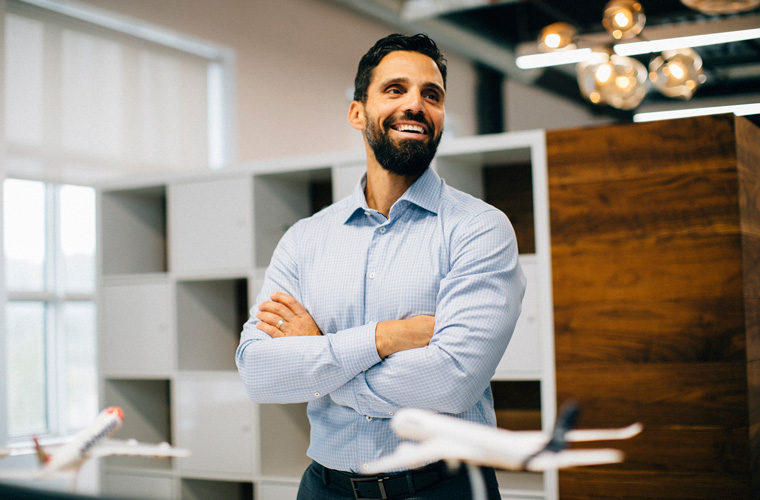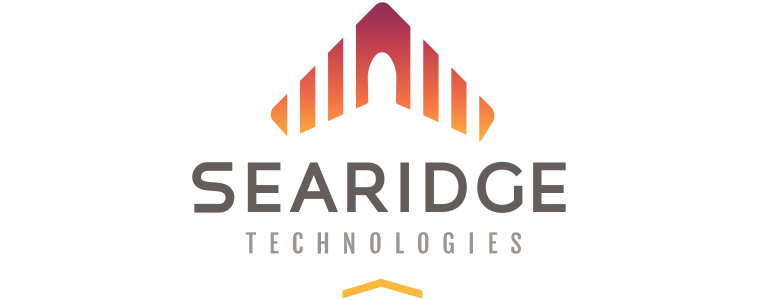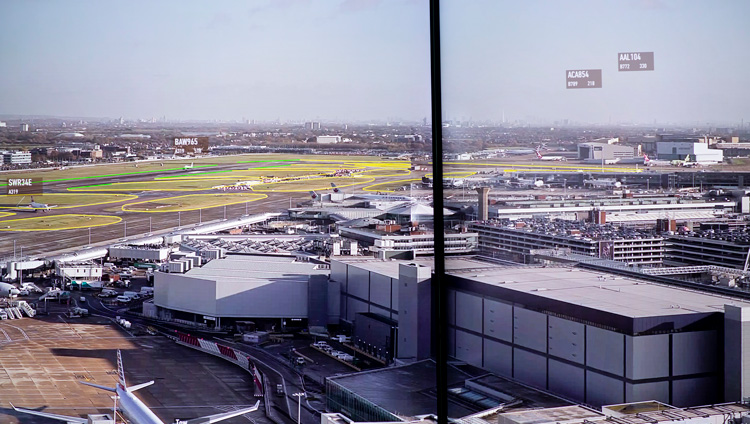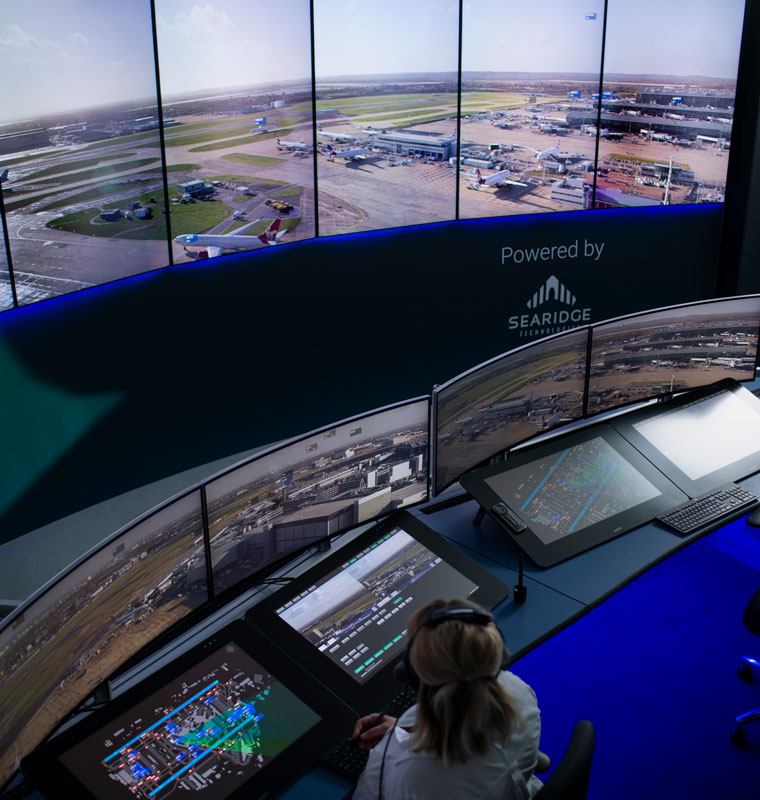Crossing the chasm: How digital towers joined the mainstream
An interview with Moodie Cheikh - CEO Searidge Technologies
“I still ask myself the same question!” laughs Moodie Cheikh when asked why, back in 2005 he and his business partner Alex Sauriol, decided it was a good idea to found an air traffic management start-up.
A safety critical industry with high barriers to entry doesn’t exactly scream ‘obvious choice’. “We wanted a challenge!”. Today, 17 years later and he’s the CEO of Ottawa-based Searidge Technologies, a company that is helping to revolutionise air traffic control at some of the world’s busiest airports.

Moodie Cheikh / CEO Searidge Technologies
“I certainly didn’t expect change to take so long. Many times, I’ve thought we were on the verge of a breakthrough that never quite happened. But it does now feel like we’ve hit a tipping point. Digital towers are ‘crossing the chasm’ toward mainstream adoption. That doesn’t mean we don’t have more battles to fight, more arguments to win, but I look now and every major ANSP around the world has a digital tower programme.”
Digital towers are ‘crossing the chasm’ toward mainstream adoption
That long journey from maverick outsiders (“people thought we were crazy!”) to market leading technology provider with customers all over the world was neither a given, nor without its setbacks.
Both Moodie and Alex had dabbled with business ideas in the past, including building a legal and secure way of sharing music online in the days before mass streaming, but neither had been quite willing to take the plunge full time. “I’d come from a pretty entrepreneurial background, all the way back to shovelling snow off our neighbours’ driveways as a kid. And we built this very cool thing – even had a customer for it - but we both had good day jobs and weren’t quite ready to go all in.”
But the idea of starting something, building something from nothing, was an itch that couldn’t be ignored. “We kept throwing ideas around. Alex had done some work in the aviation sector and we were struck by how little technology there was in use, and what there was had evolved very little in over the decades.” Sensing an opportunity, and with aviation heading back to growth following the impact of the 9/11 attacks, the pair decided it was the perfect market to disrupt, and Searidge Technologies was born.

“I had a very romantic view of aviation and we were perhaps a little naïve, but I think you need that if you’re going to try and shake up established thinking. You need to be prepared to challenge how things have been done, to ask the dumb questions. So we spoke to anyone who would listen; what was the big constraining factor on aviation?”
I had a very romantic view of aviation and we were perhaps a little naïve, but I think you need that if you’re going to try and shake up established thinking.
A theme began to emerge. The idea that the airport surface – the runways, taxiways, aprons, and gates – was the real constraint on growth and efficiency and a place where technology could make a difference. At the same time, a lot of advancement was being made in digital camera technology; “so we got to thinking, is there a way here to combine these things? Using cameras to digitise the ATC environment and build better tools for controllers to improve performance?”

The camera feed screens at Heathrow Airport Digital Tower Laboratory
It wasn’t an entirely new idea, but what research had been done up to that point had stagnated and never been acted upon. “At this stage we weren’t even talking specifically about ‘remote towers’ let alone ‘digital towers’, but just about the potential of using imaging technology to digitise elements of an airport’s air traffic operation. We believed that if you could do that, you could use that data in ways that would be hugely powerful in terms of providing analytics, monitoring and improving consistency. Of course, we’ve since added Artificial Intelligence into the mix but that was much later.”
Moodie and Alex designed a self-funded proof of concept that was tested in Ottawa, in partnership with the Ottawa Airport. It was this concept they then took on the road, including to an industry trade show in Maastricht that still looms large in Moodie’s mind. “This is 2007 or 2008 I think. We had no money, no booth, I was sharing a hotel room and we didn’t know anyone. We had absolutely zero credibility and we just went round the show and spoke to every stand. Every single one of them told us it wouldn’t work.
Every single one of them told us it wouldn’t work.
Beneath the broad smile and easy manner, you can tell that must have hurt. “We can laugh about it now, but it was tough. There are so few successful start-ups in this space, we started wondering if we’d made a terrible mistake and given up our jobs for nothing.” But the pair soon realised it wasn’t really about the technology. It was about the culture and about building trust.
Aviation has an enviable safety record, and a huge amount of work goes into keeping that way, but it’s also something Moodie argues can be used as an artificial barrier to progress. “Of course, you can’t do anything that might make something less safe, but I think some people do use ‘safety critical’ as an excuse not to act and to maintain the status quo. If something has always been done a certain way, and it works, why change it? That might be true, but it also closes you off to the possibility that things could be done better.”
I think some people do use ‘safety critical’ as an excuse not to act and to maintain the status quo.
The pair’s persistence paid off with the world’s first live video capability in a real-world operation in Abu Dhabi. In 2010, Canadian ANSP NAV CANADA then made an investment which provided both a welcome injection of cash and credibility. Suddenly people were taking notice. “Thankfully a few early pioneers did see the potential and were willing to take a step into the unknown with us. I’ll always be incredibly grateful to them.”

The first ever Searidge shipment and a very proud team!
Reflecting on those early days, does he wish they’d done anything differently? “I look back a lot actually. I used to wonder if we’d gone after more investment earlier on would it have made a difference, but I’ve come to think not. Frustrating as it was, the industry had to move at its own pace. The technology was never the problem, we knew it would work, but I think we failed to be cognisant enough of the human impact of change.”
It’s been a lesson well learnt. At places like Heathrow and Singapore, Searidge engineers and developers are today working side by side with the tower’s own operational teams, getting real-time feedback from controllers in a way that creates an inclusive environment and accelerates development. “The further you are from the end user – in this case the controller – the worse it is, both in terms of the experience and the end result. It feels like change is being done to you rather than with you and for you. We have a Digital Tower Laboratory based in the actual tower at Heathrow, and at Changi we’ve been able to do amazing things alongside the CAAS operations and engineering teams. The controllers enjoy the process and the end result is a better product.”

The Digital Tower Laboratory at Heathrow Airport
Today Searidge Technologies is operating in over 40 countries, and last year – working with UK ANSP, NATS – announced its concept for five operational digital tower models, designed to be scalable to the size and needs of any airport. The idea of a hybrid digital tower in particular – where cameras and screens are used to augment an airport’s existing, physical tower operation – is generating a lot of interest. “From the very beginning, our aim has been to delight our customers, to win their trust and to understand their challenges. Not everyone wants or needs to knock down their control tower, but they are interested in accessing the kinds of performance enhancing tools a digital tower provides. Ours is a perfect, and so far unique, solution.”
From the very beginning, our aim has been to delight our customers, to win their trust and to understand their challenges.
While not escaping the impact of Covid, Searidge Technologies has had its busiest ever 12 months, winning work in Hong Kong, the Middle East and across Europe. Early 2021, a year into Covid, Searidge kicked off the project in Hong Kong, the industry’s largest single digital platform for tower and apron management. This is also the industry’s first airport and ANSP collaboration for such a system, sharing a common software platform, technical infrastructure and video image system. So, what’s on the horizon? “Covid has definitely delayed some things, but I believe we’re now in a position to accelerate. The industry has always played the long game, which is one of its great strengths, especially when coming out of a crisis like we’ve experienced over the past two years. People aren’t looking 12 months ahead; they’re looking 12 years. Traffic will return, and will eventually exceed previous highs, so why not invest now when traffic is comparatively low?”
Advances in Artificial Intelligence are allowing for the creation of a new generation of air traffic management tools. At Heathrow, Searidge and NATS have been working on a tool that can support controller decision making in low visibility to reclaim lost capacity, while AIMEE, Searidge’s AI platform, has been used to provide automated runway clearances in non-operational trials. The integration of future UTM platforms is another area the business is exploring. “It goes back to that idea of having to delight our customers and we have to continue to innovate. The idea of technology that airports or ANSPs can easily dial up and down in line with demand is an area we’re looking at. A flexible service offering is hugely exciting, but I can’t say too much about that right now...”
Finally, if he could, what would Moodie now say to those same people he met back in Maastricht in 2007? “Well, thankfully many of them are now customers or partners, so I speak to them most weeks,” he says with a wry smile.
The chasm is well and truly being crossed.
Moodie Cheikh / Searidge Technologies / CEO and Co-founder
Moodie is a technology business leader with experience at all stages of company growth. As co-founder and CEO, Moodie has grown the company organically and primarily through international expansion. He has established the company as a technology innovator and global market leader in aviation. In 2017, Searidge became jointly owned by two tier one Air Navigation Service Providers, NAV CANADA and NATS (UK); the first partnership of its kind in the aviation space. Moodie continues to lead the company as it grows its domestic and international footprint.
An entrepreneur at heart, Moodie thrives in an environment of innovation and growth. He shares his knowledge through his role as director on various boards; as well as investing in, and advising early stage technology companies. With a particular interest in international business, Moodie helps companies develop mechanisms to allow them to operate on a global scale. He also teaches entrepreneurship to the next generation of business people through the Telfer School of Management eMBA at Ottawa University.
Interested in discussing any of the points raised in the interview? Then please contact us using the form below.
Related news and stories from around our business: